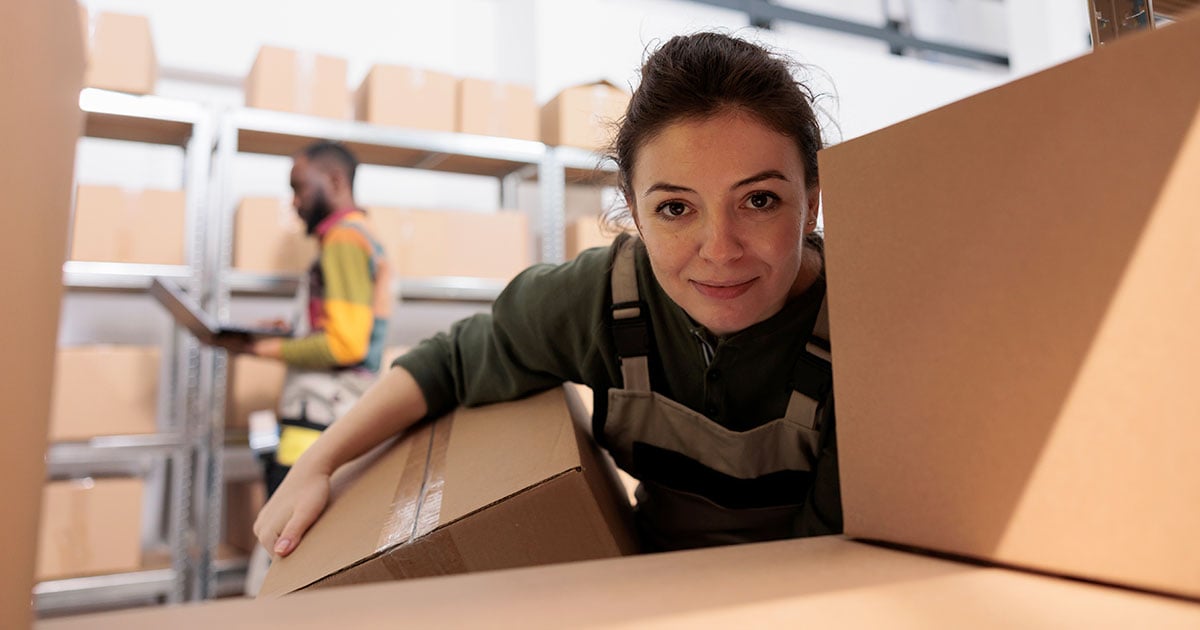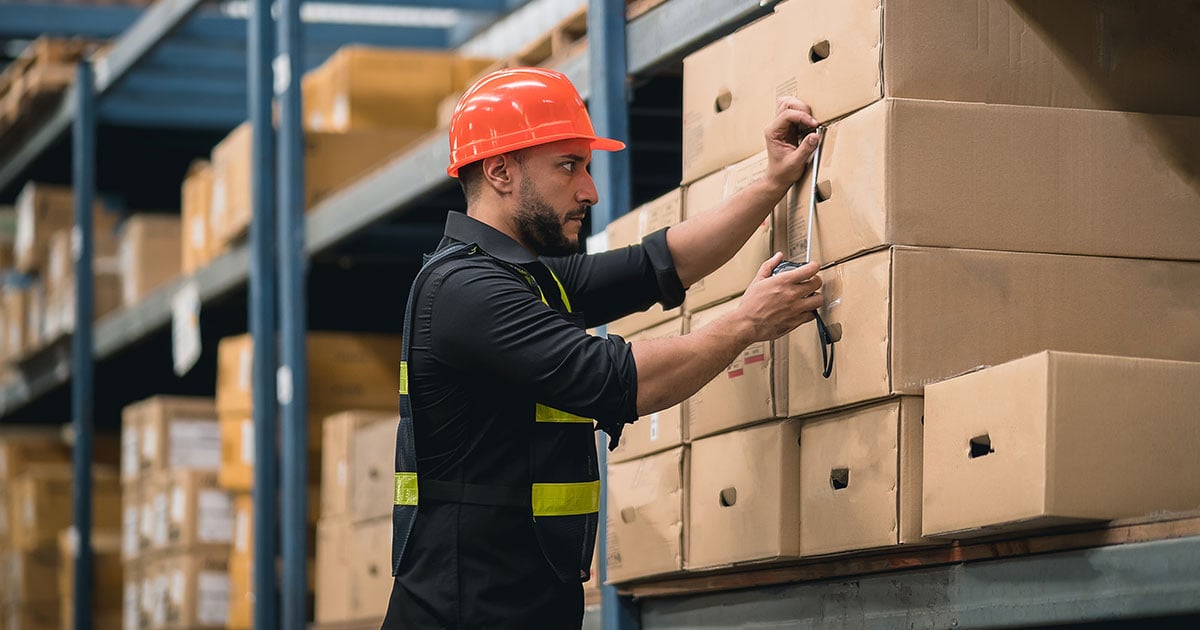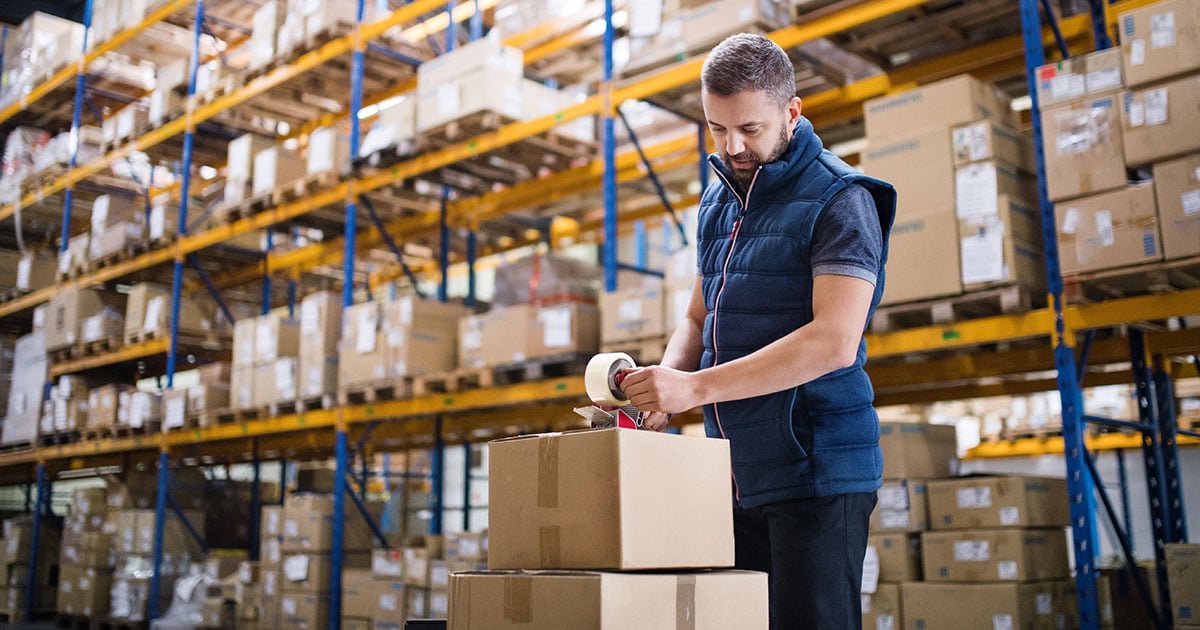11 min read
What’s Hot: Trends Driving the Packaging Industry in 2026
This past year has been a whirlwind of change that has shaken up the packaging industry. With new innovations in artificial intelligence and...
3 min read
Briana Smith : October 01, 2025

It’s the most wonderful time of the year, unless you’re in the throes of holiday ordering chaos. However, there's no need to worry, as there are several steps you can take to prepare your packaging operations for the big rush.
Below, we'll cover how practices like stocking up on supplies early and optimizing packaging choices can lead to significant savings and improved customer satisfaction.
With ongoing uncertainty around tariffs, supply chain logistics, and consumer spending, eCommerce teams are under pressure to plan ahead and stay cost-conscious when ordering packaging supplies.
Here’s what eCommerce teams must act on now to reduce costs and prevent shipping issues.

A recent report from the Mastercard Economics Institute1 has forecasted conservative retail sales growth of 3.6% between November 1 and December 24 in 2025. eCommerce businesses must be strategic when ordering essential packaging supplies and benefit from saving on costs wherever possible.
Order early and save money on last-minute costs for rush orders. Don’t get stuck with expensive, flimsy materials because you forgot to put your order in. Audit your packaging supplies now and determine what you’ll need to get through the holiday season. You’ll also avoid issues with limited availability later in the season.
Remember to factor in buffer amounts. 10-15% for low-risk, commonly stocked products and up to 25-40% for high-risk, non-standardized, or custom packaging products.
What to Do Now:

Insufficient materials, incorrectly sized packaging, and improper packaging practices lead to damaged goods during shipping – and it costs much more than you think.
Damaged goods have multiple consequences for your eCommerce business. They affect your brand’s reputation, your customer’s experience, AND the additional cost to you to not only replace the items, but the total cost of reshipping them. That includes labor and packaging materials on top of shipping costs.
Tips to Prevent Damage:

Packaging choices directly impact the cost of shipping. These costs can add up quickly if you are not aware of how shipping charges are calculated.
There are two methods to determine the cost of shipping: freight and DIM weight. The larger of the two weights determines the total cost.
Calculating Freight
Based on the weight of the package (and possibly the cost for the distance traveled).
Example: Wireless Headphones
Calculating DIM Weight
Based on how much space a package takes up in relation to its actual weight. Calculated by taking the package dimensions (length x width x height) and dividing that number by the DIM factor*.
Example: Wireless Headphones
*The DIM factor is usually 139 or 166 depending on the carrier, domestic vs. international, and even daily vs. retail shipments.
The example above shows that shipping the same product in the same box will incur a higher DIM Weight fee vs. Freight fee.
Many common carriers, such as UPS, FedEx, DHL, and the USPS have adopted DIM weight, and will reward businesses who pack more efficiently2. Eliminating extra space reduces waste, lowers fuel emissions, and increases overall load stabilization, which reduces shipping costs.
Another aspect to pay attention to is holiday surcharge fees from common carriers, which increase the closer it is to December 24. Many of these start as early as September. Check each carrier’s website for their holiday surcharge fee charts and note the dates so you can prepare in advance.
Recommendations for Cost Savings:

Reducing packaging waste is top of mind for all businesses, but for eCommerce operations with a high volume of shipments, it is essential.
With the passage of EPR (Extended Producer Responsibility) legislation, producers of primary, secondary, and tertiary packaging are responsible for reporting and paying fees on packaging usage in the states where the packaging is shipped. This only applies to states where legislation has been passed and implementation has started.
Sustainability efforts improve brand perception as more consumers and retailers are looking to reduce waste.
Incorporating More Sustainable Packaging Materials
Implementing packaging strategies that utilize sustainable and protective materials, right-size packaging, and factoring in DIM weights, will leave you well-positioned leading into the hectic holiday shopping season.
Not sure where to start? Our experts at BradyPLUS can help you select the packaging products for your eCommerce needs to prep for the holiday rush.
Sources
1. US holiday shopping growth to cool this year, Mastercard forecasts
2. Inside the latest e-commerce packaging trend

11 min read
This past year has been a whirlwind of change that has shaken up the packaging industry. With new innovations in artificial intelligence and...

12 min read
It starts with a click. Add to cart. Purchase made!

9 min read
The packaging world in North America is facing a moment of transformation. Between unpredictable global developments, shifting consumer habits, and...